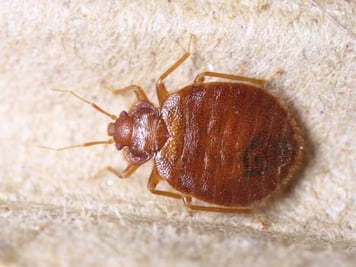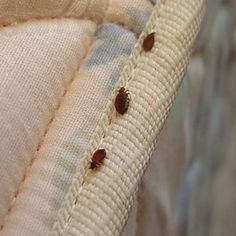A1 Bed Bug Exterminator Houston: Trustworthy Treatment Providers
Wiki Article
Understanding the Lifecycle of Insects for Targeted Control Methods
Comprehending the lifecycle of bugs is a basic facet of efficient parasite management techniques. Through a much deeper understanding of just how insects advance and grow, tailored control methods can be developed to resolve particular points in their lifecycle, inevitably leading to even more successful bug management end results.Relevance of Recognizing Insect Lifecycle
Recognizing the lifecycle of insects is crucial for creating reliable and targeted control techniques in bug management. By understanding the numerous phases a pest experiences from egg to grownup, parasite control specialists can identify weak spots in the lifecycle where intervention can be most effective. For example, knowing when larvae are most active can aid determine the optimum timing for applying larvicides. In addition, recognizing the lifespan of a pest varieties can help in forecasting population growth patterns and potential infestation dangers.Moreover, identifying the certain environmental problems needed for each stage of the bug's lifecycle can guide decisions on habitat modification or exemption methods to interrupt the lifecycle and decrease pest populaces. This expertise enables pest monitoring experts to implement proactive procedures instead of counting solely on responsive treatments, bring about even more lasting and long-term parasite control services. Inevitably, a detailed understanding of bug lifecycles encourages bug control professionals to tailor their techniques properly, lessening ecological effects and maximizing control results.
Key Stages in Parasite Growth
To successfully carry out targeted control strategies in parasite management, a critical aspect hinges on thoroughly identifying and comprehending the key phases in insect development. Bug advancement normally is composed of several vital phases that are vital for their lifecycle and administration. The initial stage is the egg phase, where insects lay eggs that later on hatch right into larvae. Larvae then proceed right into pupae, a phase where they undertake metamorphosis prior to becoming grown-up parasites. Understanding these stages is vital as it assists in pinpointing vulnerable factors in the lifecycle where control procedures can be most efficient.

Susceptabilities in Bug Lifecycle
Throughout the different phases of a bug's lifecycle, unique vulnerabilities arise that can be purposefully targeted for efficient control measures. One vital vulnerability lies in the egg stage, where bugs are commonly a lot more vulnerable to specific insecticides or organic control representatives as a result of their soft outer shell, making them much easier targets for treatment. Additionally, the larval or nymph stage presents vulnerabilities as bugs undergo rapid growth and advancement, calling for high energy intake that can be exploited by interrupting their food sources or introducing development inhibitors. Pupal phases, characterized by stability and improvement, offer a home window for targeted control through physical barriers or specific treatments that impede successful emergence. Lastly, grown-up insects, while much more resistant because of their reproductive capability, can still be susceptible throughout mating or egg-laying activities, which can be disrupted through scent catches or sanitation techniques. Comprehending these vulnerabilities in the parasite lifecycle is vital for developing reliable and accurate control strategies that successfully manage pest populaces while reducing ecological impact.Carrying Out Targeted Control Actions

Implementing targeted control procedures typically entails a multi-faceted strategy. This might consist of habitat alteration to make the environment less hospitable to our website parasites, such as getting rid of standing water for mosquito control or sealing entrance points for rodents. Additionally, biological control approaches can be used, where natural killers or microorganisms are presented to keep bug populaces in check.
Chemical control, such as the mindful application of pesticides, is another common strategy. It is necessary to use these compounds judiciously to reduce environmental influence and prospective damage to non-target types - A1 Bed bug exterminator houston LLC. Integrated Insect Monitoring (IPM) approaches that integrate different control measures in a worked with and lasting way are typically one of the most effective in achieving long-term pest administration goals. By implementing targeted control actions based upon an extensive understanding of bug lifecycles, insect populaces can be properly regulated while lessening threats to human health and the atmosphere.
Boosted Pest Management Practices

Moreover, the consolidation of biological control representatives, such as all-natural predators or virus of parasites, can help in reducing reliance on chemical pesticides and advertise an extra well balanced ecosystem. Carrying out physical barriers and traps can also be part of boosted pest management techniques, providing safe and targeted remedies top article for bug control. Additionally, making use of scents and other semiochemicals can interfere with pest breeding patterns and interaction, causing minimized parasite populations in time.
Final Thought
To conclude, understanding the lifecycle of insects is crucial for effective parasite monitoring methods. By identifying vital stages in parasite development and susceptabilities in their lifecycle, targeted control measures can be executed to decrease parasite populations. Boosted pest administration methods can help in reducing the reliance on broad-spectrum chemicals and advertise more sustainable and ecologically pleasant bug control techniques. This understanding plays a crucial role in maintaining healthy communities and agricultural productivity.Recognizing the lifecycle of pests is necessary for developing efficient and targeted control strategies in parasite monitoring. By comprehending the numerous stages a bug goes via from egg to grownup, pest control professionals can identify at risk points in the lifecycle where intervention can be most effective. Ultimately, a complete understanding of bug lifecycles empowers parasite control experts to tailor their techniques successfully, minimizing environmental influences and taking full advantage of control end results.
By implementing targeted control steps based on a comprehensive understanding of pest lifecycles, pest populaces can be efficiently managed while reducing threats to human health and the environment.
By recognizing essential stages in pest advancement and vulnerabilities in their lifecycle, targeted control actions can be implemented to decrease insect populaces.
Report this wiki page